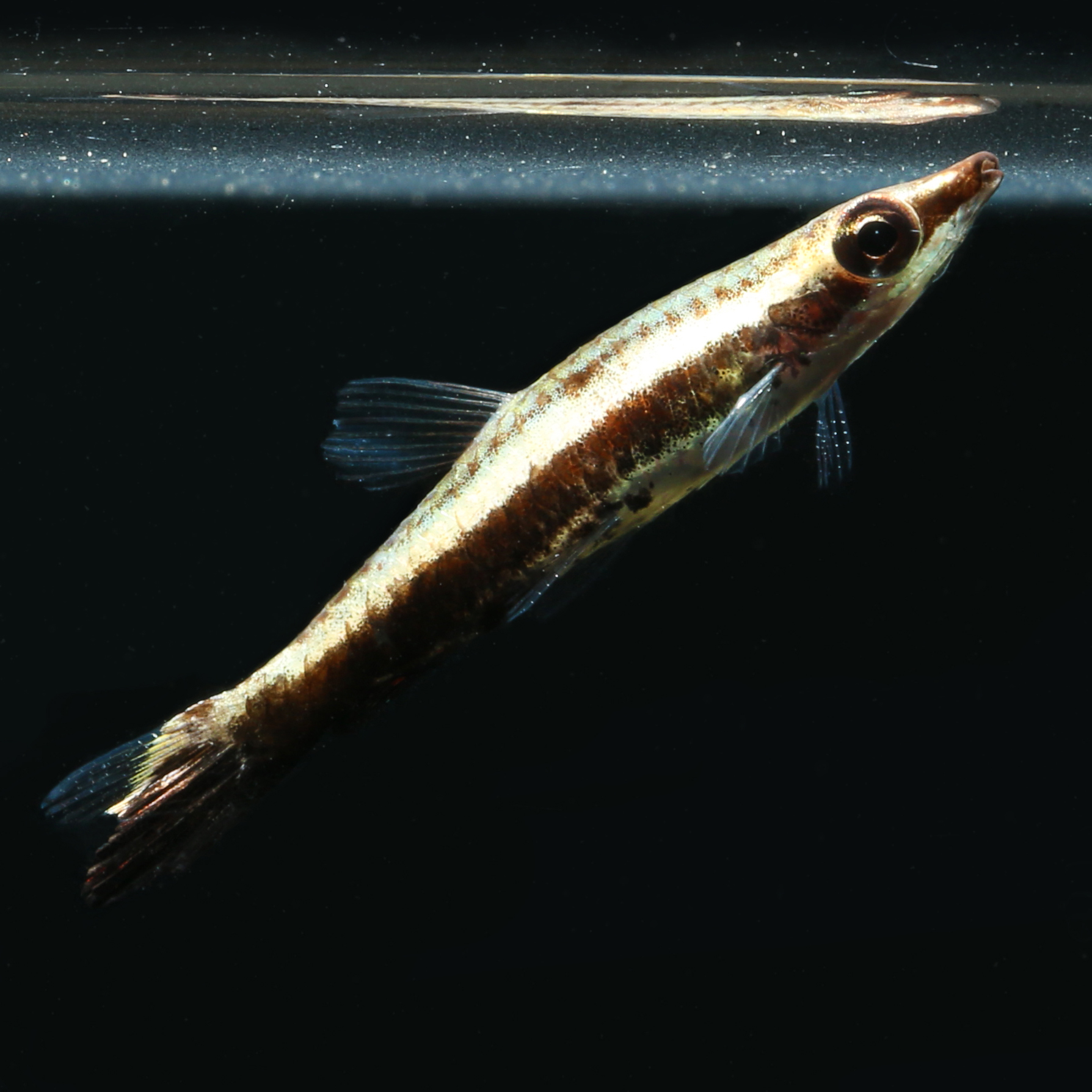Brown Pencilfish
Nannostomus eques
The Brown Pencilfish is an interesting sight, especially because of its preferred oblique posture.
- contrasting stripe pattern
- peaceful school fish
- oblique posture
Out of stock
Receive in-stock notifications for this.
 Delivery in a few working days
Delivery in a few working days
 Free shipping from €60 across Austria
Free shipping from €60 across Austria





Important data
Product description & details
The Brown Pencilfish originally comes from the middle and upper Amazon catchment in South America and inhabits the low-flow riparian zones there. This fish, which grows to around 5 cm in length, belongs to the family of slender tetras and is predominantly calm in its kind. Although this Nannostomus species has a rather subtle coloration, the dark brown longitudinal stripes offer a nice contrast to the light brown basic coloration. These great fish look completely different at night – the horizontal stripes are no longer visible and are replaced by two vertical, dark brown stripes on a silvery-grey background colour.
Care in the aquarium
The peaceful fish needs an aquarium volume of at least 60 liters and fairly soft water. The water should also be around 22-28°C, as germ-free as possible and ideally slightly acidic. Brown Pencilfish feel most comfortable in a group of at least 10 animals. Socializing with very lively animals is not a good option as the little tetra is easily intimidated and withdraws. However, calm bottom dwellers such as Corydoras are very suitable as tank mates. Care should be taken to ensure that the water is nitrate-free, light and soft. These fish feel particularly comfortable in a tank with dense vegetation, which offers enough hiding places, but also enough swimming space. Floating plants are also welcome in the aquarium, since the Brown Pencilfish is mainly found near the water surface and likes to hide between the roots of the floating plants.
Feeding
In its natural habitat, this Nannostomus feeds on small worms and crustaceans, insect larvae and approach food. In the aquarium, it is optimally fed with small amounts of live and frozen food, but will also accept fine dry food.
Sexual characteristics and breeding
Males are slightly slimmer and more intensely colored than their female counterparts. Furthermore, the males of the Brown Pencilfish have pelvic fins with bluish-white tips and, depending on where they were found, a red-black colored caudal and anal fin. For breeding, fine-leaved plants should be present in the tank, between which the females spawn. In order to increase the fish’s willingness to spawn, more live food is fed and the tank is darkened. The water should also be very soft, rather acidic and, above all, clean. After spawning, the eggs should be transferred to a separate breeding tank or the adults should be removed from the tank, since dwarf ornamental tetras are spawn predators and do not stop at their own offspring. After about 1-2 days, the dwarfs hatch and, after the yolk sac has been consumed, can be fed with infusoria, copepods and newly hatched Artemia nauplii. For healthy growth of the young fish, the water should be cooler.





